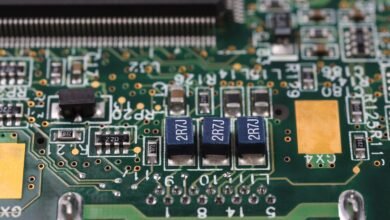Drop g f type evertune

The Drop G F-Type Evertune: The Ultimate Low-Tuned Guitar Setup
In the modern world of heavy music, guitarists constantly seek the perfect balance between low tunings, sustain, and tuning stability. Drop G tuning has become a staple for metal and progressive genres, offering deep, thunderous tones that add an aggressive edge to any composition. However, tuning stability remains one of the biggest challenges, particularly when tuning so low. Enter the Evertune bridge, a game-changing innovation that provides near-perfect tuning stability regardless of string tension changes, temperature fluctuations, or aggressive playing. In this article, we’ll explore how combining Drop G tuning, an F-Type guitar, and an Evertune bridge creates the ultimate setup for modern metal guitarists.
What is Drop G Tuning?
Drop G tuning is a popular tuning in heavy music, especially among metalcore, djent, and progressive metal players. It involves tuning the strings as follows:
- G (Lowest String)
- D
- G
- C
- E
- A (Highest String)
This tuning is derived from standard tuning but drops the lowest string down to G, allowing for ultra-heavy riffing while maintaining chord clarity. Drop G is widely used in bands like Whitechapel, Periphery, and Oceano, who rely on its deep, growling tones.
Why Choose an F-Type Guitar?
An F-Type guitar, often referring to Fender-inspired designs, is not commonly associated with extreme metal. However, modified F-Type guitars—such as the Fender Jim Root Telecaster or Charvel DK24—offer a unique tonal characteristic with longer sustain, bright attack, and ergonomic design. When combined with high-output pickups and a proper setup, an F-Type guitar can deliver the tight, punchy sound required for Drop G tuning.
Key Features of F-Type Guitars for Drop G:
- Longer Scale Length (26.5” or 27”) – Helps maintain string tension.
- High-Output Humbuckers – Necessary for clarity in low tunings.
- Ergonomic Body Shape – Offers comfort for extended playing.
- Bolt-On vs. Set-Neck vs. Neck-Through – Bolt-on designs provide snappy attack, while neck-through builds enhance sustain.
The Evertune Bridge: A Game-Changer for Drop Tunings
The Evertune bridge is a revolutionary fixed bridge system designed to keep a guitar in perfect tune under all playing conditions. It uses a unique system of tension springs to maintain tuning stability, no matter how hard or soft the player picks the strings.
How Does Evertune Work?
The Evertune bridge operates on three zones:
- Zone 1: The string is completely loose and cannot vibrate.
- Zone 2: The string is held under tension by the bridge, maintaining perfect tuning even with aggressive picking.
- Zone 3: Allows for controlled bends, similar to a standard fixed bridge.
For Drop G tuning, Evertune prevents string fluctuations, ensuring that even the lowest notes ring clear without going sharp or flat. This is crucial when using heavier gauge strings, as standard bridges often cause them to go sharp when picked aggressively.
Setting Up an F-Type Guitar with Evertune in Drop G
To achieve the best results, follow these steps when setting up an F-Type guitar with an Evertune bridge for Drop G tuning.
1. Choose the Right Strings
For Drop G tuning, the ideal string gauges are:
- .070–.074 for the low G string
- .056 for the D string
- .046 for the G string
- .036 for the C string
- .026 for the E string
- .017 for the A string
These gauges provide optimal tension while preventing floppiness.
2. Adjust the Evertune for Stability
Each string must be correctly tensioned within Zone 2 of the Evertune system. This ensures that the tuning remains stable even during aggressive chugging and palm muting.
3. Pickups for Drop G and Evertune
High-output, active pickups work best for ultra-low tunings. Some top choices include:
- EMG 81/85 (Active, tight response)
- Fishman Fluence Modern (Versatile, clear lows)
- Seymour Duncan Nazgul/Sentient (Passive, aggressive tone)
4. Amplification and Tone Shaping
Using the right amp settings is crucial for Drop G clarity. Consider the following settings:
- Gain: Moderate to high (avoid excessive saturation)
- Bass: 6-7 (tight low-end response)
- Mid: 5-6 (cut through the mix)
- Treble: 7-8 (enhance attack and clarity)
Ideal amps for Drop G include:
- Mesa Boogie Dual Rectifier
- Peavey 6505+
- Fractal Audio Axe-FX III (for digital versatility)
Advantages of Using an F-Type Guitar with Evertune in Drop G
1. Unmatched Tuning Stability
Evertune ensures your guitar stays perfectly in tune during long studio sessions or live performances.
2. Enhanced Sustain and Clarity
An F-Type guitar’s bright attack, combined with the Evertune’s precision, results in a clear and articulate sound, even with heavily distorted tones.
3. Reliable Low-End Performance
Drop G is notorious for sounding muddy. Evertune eliminates unwanted fluctuations, allowing for precise, tight riffing.
Conclusion
The combination of Drop G tuning, an F-Type guitar, and an Evertune bridge is a powerhouse setup for modern metal players. It provides the tuning stability, clarity, and low-end articulation necessary for professional performance. Whether you’re recording in the studio or playing live, this setup ensures consistency and reliability with every note.
By following the right setup techniques, choosing the right pickups, and dialing in proper amp settings, you can achieve the ultimate heavy tone while keeping your guitar perfectly in tune. The future of low-tuned guitars has never looked more stable—thanks to the Evertune bridge.
If you’re a guitarist looking to push the boundaries of heavy music, this setup is a must-try!



